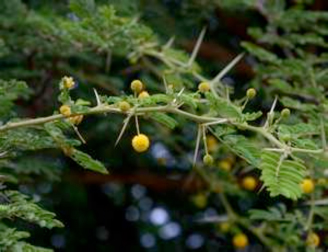Advocating for Acacia
Becoming an advocate for the products of the Acacia tree is an outgrowth of my penchant for reading ingredient labels. This time it was the label on a medical food supplement made by Metagenics. I am studying to become a lifestyle educator to support people during their medically supervised detox and body composition improvement programs. Since I will need to explain the components and purposes of the ingredients in the medical food supplements, I was making notes. I came across the item called “Acacia nilotica.” Most of us are familiar with the various Acacia trees in our local landscape, so I was intrigued. When I researched the topic, I was overwhelmed completely by the history and range of use for Acacia, worldwide.
To talk about all the Acacias would require a book. I will focus on the one included in the product.
The species of Acacia nilotica is a hardy, thorny variety that grows in the desert regions of Egypt, Africa and India. It has over 5000 years of historical use as a food, medicine, textile dye, building material and much more. For centuries the sap had been tapped, dried and exported to market as a revered and valuable material, much the same as myrrh and frankincense. We might relate this idea to the harvesting of maple sugar. The sap, or “gum” of Acacia nilotica is sometimes called gum Arabic, but this can be confusing as that is name is also used for the aromatic gum of a completely different plant. So, we will stick with the term Acacia gum.
Acacia gum is included in many foods due to its culinary and salubrious properties. It is easily water soluble, tasteless and a rich source of fiber that creates a soothing gel, called mucilage. This gel will coat the internal tissues, reduce inflammation, feed the beneficial flora in the intestines and bind with LDL cholesterol to remove it from the body. This Acacia fiber is a primary and effective therapy to deal with the painful constipation/diarrhea cycle of irritable bowel syndrome and diverticulitis. It is a great help for those with hemorrhoids. The gel is used in cold care preparations, to thicken cough syrup while adding its ability to reduce inflammation on contact. It is easy to add the powder to any liquid, making it a great high fiber addition to smoothies, yogurt, salad dressings, soups and more.
It also stimulates the production of the hormone that tells us we are “full,” making a great adjunct to any weight-loss diet. That is why you will see it in the ingredients of packaged goods, usually called some sort of “gum.” This Acacia gum fiber is favored above other better-known fibers, such as psyllium, since it does not swell up or present a choking hazard and won’t solidify if left sitting in a liquid for too long.
Acacia nilotica powder is readily available in the supplement section of the health food store or online and comes in both capsule and loose forms. Check out www.helpforIBS.com to see the wide array of options.
Since I am an avid gardener, I am always interested in finding plants that have multiple uses. Acacia nilotica makes a great thorny, privacy hedge, growing to about 25 feet tall. It is attractive, with lacy foliage, yellow blooms in spring and interesting, edible bean pods in fall. As a legume, it is nitrogen-fixing and improves the soil. It grows best in conditions like ours in San Diego, alluvial clay soil with seasonal rain. I found a specimen for sale online at $18 for a four-inch potted plant or seeds for $10.
It looks as if it will be awhile before I can install one in the Trees for Health garden in Balboa Park. Meanwhile, I will enjoy the thorn-less Acacia cousins that already reside in the garden, knowing that they come with an ancient pedigree of healing value. And, I can explain the purpose and importance of it in nutritional supplements for my clients.
Category: Life Style








